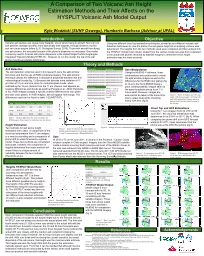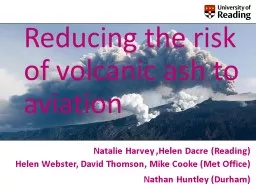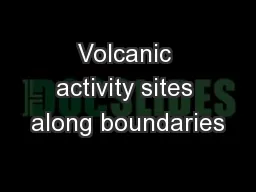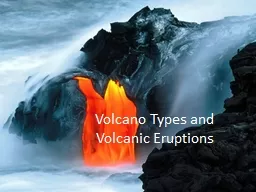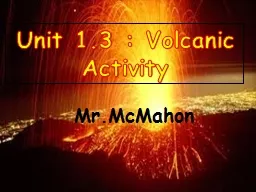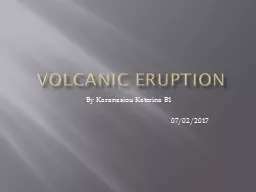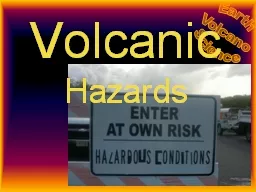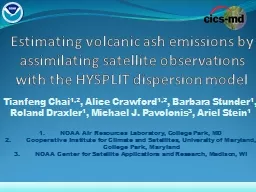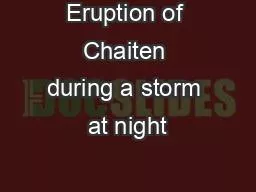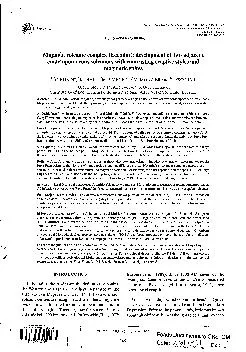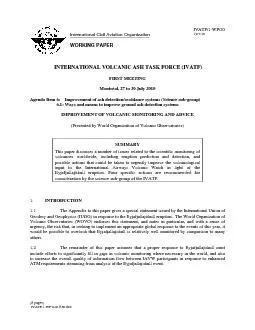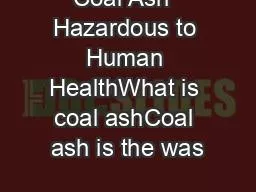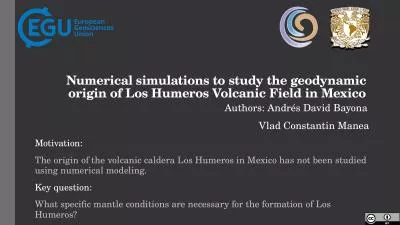PPT-A Comparison of Two Volcanic Ash Height
Author : phoebe-click | Published Date : 2016-06-15
Estimation Methods and Their Affects on the HYSPLIT Volcanic Ash Model Output Kyle Wodzicki SUNY Oswego Humberto Barbosa Advisor at UFAL Conclusion References
Presentation Embed Code
Download Presentation
Download Presentation The PPT/PDF document "A Comparison of Two Volcanic Ash Height" is the property of its rightful owner. Permission is granted to download and print the materials on this website for personal, non-commercial use only, and to display it on your personal computer provided you do not modify the materials and that you retain all copyright notices contained in the materials. By downloading content from our website, you accept the terms of this agreement.
A Comparison of Two Volcanic Ash Height: Transcript
Download Rules Of Document
"A Comparison of Two Volcanic Ash Height"The content belongs to its owner. You may download and print it for personal use, without modification, and keep all copyright notices. By downloading, you agree to these terms.
Related Documents

